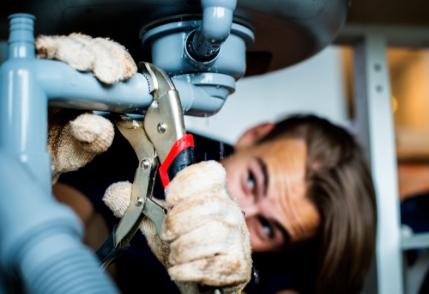What is the Paycheck Protection Program?
The SBA Paycheck Protection Program is the official name of the $367 billion in funds allocated by congress and administered by the Small Business Administration (SBA). It’s part of the 7(a) loan program with the goal of providing low-interest loans with favorable terms to small businesses impacted by the current economic crisis caused by COVID-19.
How Do I Apply for the Paycheck Protection Program?
Before you apply, you’ll need to make sure you have answers/documentation for some important information the lender will need to evaluate your SBA loan application. You will need to know much money do you need to borrow to meet your needs, including:
- Your payroll costs, including employee salary, wages and commissions, payment of tips, payments for vacation, parental, family, and sick leave, etc. These costs may also include the costs of group health benefits (including insurance premiums), payment of retirement benefits, payment of state and local tax assessment on employee compensation, an income for a sole proprietor or independent contractor not in excess of $100,000.
- Your utility expenses, defined as electricity, gas, water, transportation, and telephone or internet access for service that began before February 15, 2020.
Will My Business Qualify for the Paycheck Protection Program?
To qualify for the Paycheck Protection Program, you must be a small business as defined by the SBA. This includes:
- Small businesses or non-profit 501(c)(3) organizations with 500 or fewer employees
- Small businesses, 501(c)(3) veteran’s organizations or tribal concerns that meet the SBA size standards
- Sole proprietors or independent contractors
You must have been in operation on February 14, 2020, and had employees for whom the borrower paid salaries and payroll taxes, or paid independent contractors (as reported on Form1099-MISC). An ‘employee’ includes individuals employed on a full-time, part-time, or other basis.
Additionally, “…individuals who operate under a sole proprietorship or as an independent contractor and eligible self-employed individuals shall be eligible,” according to the legislation. If your business falls into this category, you will need to provide documentation such as “payroll tax filings reported to the Internal Revenue Service, Forms 1099-MSC, and income and expenses from the sole proprietorship, as determined by the (SBA) Administrator and the (Treasury) Secretary.”
What Are the Loan Terms Offered Through the Program?
The maximum loan amount is the lesser of $10 million and 2.5 times the average monthly payroll costs (this is why the payroll calculation is so important) for the one year period before the loan was made, with consideration for any seasonality-based adjustments or a shorter period for businesses less than a year old. In other words, if you have been in business for less than a year or are a seasonal business, the nuance of your business will be taken into consideration.
The maximum loan term is 10 years, but shorter terms will also be available. The Secretary of the Treasury, in consultation with the SBA, will set guidance on interest rates and other terms and conditions of the program. Currently interest rates are negotiated between the SBA lender and the borrower, based upon the Prime Rate or the SBA Peg Rate, with a cap.
Interest rates will be deferred for one year.
Can Loans Through the Paycheck Protection Plan Be Forgiven?
These loans are available for forgiveness, but there are some conditions for which some loan forgiveness is available, but don’t assume forgiveness is automatic and any forgiveness (if available in your circumstance) will be based upon factors like your payroll costs, rent, utilities, and interest payments on debts you had previous to receiving the aid—and will go through a review with the lender.
What Should I Be Doing to Prepare my Application?
You will have to provide your 941 (payroll forms for 2019) and if you are a sole prop or do not have employees we will need a copy of your 2019 filed tax returns.
Frequently Asked Questions
What types of businesses and entities are eligible for a PPP loan?
• Businesses and entities must have been in operation on February 15, 2020.
• Small business concerns, as well as any business concern, a 501(c)(3) nonprofit organization, a 501(c)(19) veterans organization, or Tribal business concern described in section 31(b)(2)(C) that has fewer than 500 employees or fewer employees than established by the relevant industry code.
• Individuals who operate a sole proprietorship or as an independent contractor and eligible self-employed individuals.
• Any business concern that employs not more than 500 employees per physical location of the business concern and that is assigned a North American Industry Classification System code beginning with 72, for which the affiliation rules are waived.
• Affiliation rules are also waived for any business concern operating as a franchise that is assigned a franchise identifier code by the Administration, and company that receives funding through a Small Business Investment Company.
How is the loan size determined? Depending on your business’s situation, the loan size will be calculated in different ways (see below). The maximum loan size is always $10 million.
- If you were in business February 15, 2019 – June 30, 2019: Your max loan is equal to 250 percent of your average monthly payroll costs during that time period. If your business employs seasonal workers, you can opt to choose March 1, 2019 as your time period start date.
- If you were not in business between February 15, 2019 – June 30, 2019: Your max loan is equal to 250 percent of your average monthly payroll costs between January 1, 2020 and February 29, 2020.
- If you took out an Economic Injury Disaster Loan (EIDL) between February 15, 2020 and June 30, 2020 and you want to refinance that loan into a PPP loan, you would add the outstanding loan amount to the payroll sum. What costs are eligible for payroll? • Compensation (salary, wage, commission, or similar compensation, payment of cash tip or equivalent) • Payment for vacation, parental, family, medical, or sick leave • Allowance for dismissal or separation • Payment required for the provisions of group health care benefits, including insurance premiums • Payment of any retirement benefit • Payment of State or local tax assessed on the compensation of employees What costs are not eligible for payroll? • Employee/owner compensation over $100,000 • Taxes imposed or withheld under chapters 21, 22, and 24 of the IRS code • Compensation of employees whose principal place of residence is outside of the U.S • Qualified sick and family leave for which a credit is allowed under sections 7001 and 7003 of the Families First Coronavirus Response Act
What are allowable uses of loan proceeds? • Payroll costs (as noted above) • Costs related to the continuation of group health care benefits during periods of paid sick, medical, or family leave, and insurance premiums • Employee salaries, commissions, or similar compensations (see exclusions above) • Payments of interest on any mortgage obligation (which shall not include any prepayment of or payment of principal on a mortgage obligation) • Rent (including rent under a lease agreement) • Utilities • Interest on any other debt obligations that were incurred before the covered period
What are the loan term, interest rate, and fees? The maximum term is 10 years, the maximum interest rate is 4 percent, zero loan fees, zero prepayment fee (SBA will establish application fees caps for lenders that charge).
How is the forgiveness amount calculated? Forgiveness on a covered loan is equal to the sum of the following payroll costs incurred during the covered 8 week period compared to the previous year or time period, proportionate to maintaining employees and wages (excluding compensation over $100,000): • Payroll costs plus any payment of interest on any covered mortgage obligation (not including any prepayment or payment of principal on a covered mortgage obligation) plus any payment on any covered rent obligation plus and any covered utility payment.
How do I get forgiveness on my PPP loan? You must apply through your lender for forgiveness on your loan. In this application, you must include:
- Documentation verifying the number of employees on payroll and pay rates, including IRS payroll tax filings and State income, payroll and unemployment insurance filings
- Documentation verifying payments on covered mortgage obligations, lease obligations, and utilities.
- Certification from a representative of your business or organization that is authorized to certify that the documentation provided is true and that the amount that is being forgiven was used in accordance with the program’s guidelines for use.
What happens after the forgiveness period? Any loan amounts not forgiven at the end of one year is carried forward as an ongoing loan with max terms of 10 years, at 4% max interest. Principal and interest will continue to be deferred, for a total of 6 months to a year after disbursement of the loan. The clock does not start again.
Can I get more than one PPP loan? No, an entity is limited to one PPP loan. Each loan will be registered under a Taxpayer Identification Number at SBA to prevent multiple loans to the same entity.
What kind of lender can I get a PPP loan from? All current SBA 7(a) lenders (see more about 7(a) here) are eligible lenders for PPP. The Department of Treasury will also be in charge of authorizing new lenders, including non- bank lenders, to help meet the needs of small business owners.
How does the PPP loan work with the temporary Emergency Economic Injury Grants and the Small Business Debt Relief program? Emergency Economic Injury Grant recipients and those who receive loan payment relief through the Small Business Debt Relief Program may apply for and take out a PPP loan.






